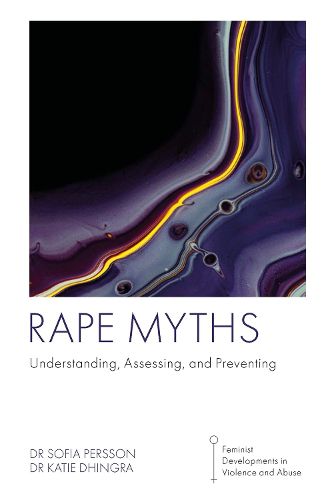Readings Newsletter
Become a Readings Member to make your shopping experience even easier.
Sign in or sign up for free!
You’re not far away from qualifying for FREE standard shipping within Australia
You’ve qualified for FREE standard shipping within Australia
The cart is loading…






Myths and misconceptions surrounding sexual violence are thought to be implicated in the prevalence of rape and in the lack of justice for women who have been subjected to rape. Rape Myths comprehensively examines the theoretical background, prevalence, assessment, and functions of these beliefs.
Outlining the meaning and feminist foundations of rape myths, this book also considers their conceptualisation as the measurable construct of Rape Myth Acceptance (RMA). Drawing on the authors' research, the book details the prevalence of RMA among different public and professional groups, as well as the societal consequences of these pervasive beliefs, particularly in terms of treatment within the criminal justice system. RMA is considered in the crucial context of its scaffolding within wider sexism in society and its perpetuation in the media. Looking ahead, Persson and Dhingra question how well rape myth prevention works. Can society reduce the prevalence of these beliefs? If so, how?
Including a detailed overview of the psychometric properties of tools used to measure RMA, and a methodological manual for designing and executing research in this area, Rape Myths is a practical guide for those seeking to research rape myths and other attributions in rape cases.
$9.00 standard shipping within Australia
FREE standard shipping within Australia for orders over $100.00
Express & International shipping calculated at checkout
Myths and misconceptions surrounding sexual violence are thought to be implicated in the prevalence of rape and in the lack of justice for women who have been subjected to rape. Rape Myths comprehensively examines the theoretical background, prevalence, assessment, and functions of these beliefs.
Outlining the meaning and feminist foundations of rape myths, this book also considers their conceptualisation as the measurable construct of Rape Myth Acceptance (RMA). Drawing on the authors' research, the book details the prevalence of RMA among different public and professional groups, as well as the societal consequences of these pervasive beliefs, particularly in terms of treatment within the criminal justice system. RMA is considered in the crucial context of its scaffolding within wider sexism in society and its perpetuation in the media. Looking ahead, Persson and Dhingra question how well rape myth prevention works. Can society reduce the prevalence of these beliefs? If so, how?
Including a detailed overview of the psychometric properties of tools used to measure RMA, and a methodological manual for designing and executing research in this area, Rape Myths is a practical guide for those seeking to research rape myths and other attributions in rape cases.